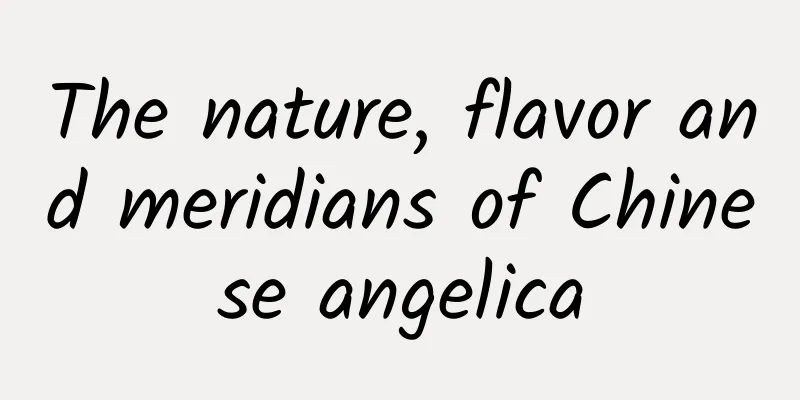The effects and functions of peony root, do you know about peony root?

|
The root of peony, which is what Chinese medicine calls peony, is a Chinese medicinal material with many functions. It has been used as a medicinal material a long time ago and recorded in the "Ben Jing". The root of peony can be useful in many places and can be eaten with many medicinal materials. So today I will share with you the effects and functions of peony root. The root of peony is still called "peony" and is a famous Chinese medicinal material. The name of peony was recorded in the medical work "Ben Jing" more than a thousand years ago. Tao Hongjing, an outstanding medical scientist in the Northern and Southern Dynasties, began to divide it into two types: white peony root and red peony root. The difference between them is that red peony root is a wild product and is used raw as a medicine. Its function is better at cooling blood and removing blood stasis; white peony root is a cultivated product and is made by scraping, boiling, slicing and drying. Its function is better at replenishing blood and nourishing yin. Among them, the peony produced in Zhejiang has the best quality and is called "Hangzhou White Peony". There are hundreds of ancient prescriptions that use white peony as the main ingredient. For example, "Guizhi Decoction" uses peony to harmonize the blood and defense system on the skin surface; "Huangqin Decoction" uses peony to harmonize the blood and qi in the abdomen; and "Zhi Shaoyaohua Gancao Decoction" uses peony to replenish the yin fluid in the blood vessels. In clinical obstetrics and gynecology, peony is widely used. The main chemical component of peony root is paeoniflorin. In addition, it also contains paeonol, benzoic acid, volatile oils, resins, tannins, sugars, starch, triterpenes, etc. Paeoniflorin has an inhibitory effect on the central nervous system, and has good pharmacological effects such as antispasmodic, analgesic, sedative, antipyretic, anticonvulsant, anti-inflammatory, anti-ulcer, dilation of coronary arteries and hind limb blood vessels, and lowering of blood pressure. The medicinal uses of peony root include white peony root and red peony root. It is generally believed that the roots of wild peony that are dried directly are red peony root, while the roots of cultivated peony that are peeled and boiled in water are white peony root. Red peony root is a heat-clearing and blood-cooling medicine with a bitter taste and slightly cold nature. It enters the liver meridian. It has the effects of clearing away heat and cooling blood, dispersing blood stasis and relieving pain. It is mainly used to treat heat entering the blood, macules, vomiting and epistaxis, bruises, amenorrhea, abdominal masses, carbuncles, sores, red eyes and cataracts, etc. White peony root has the functions of nourishing blood and restraining yin, softening the liver and relieving pain. It is mainly used to treat liver blood deficiency, irregular menstruation, liver-spleen disharmony, chest, flank and abdominal pain, cramps in the limbs, hyperactivity of liver yang, headache and dizziness. In clinical practice, it should be selected and used purposefully according to the needs of the disease. Peony root contains paeoniflorin and benzoic acid. Its uses vary depending on the species. It is an antispasmodic, analgesic and menstrual emmenagogue. It is effective for women's abdominal pain, stomach cramps, dizziness, gout, diuresis and other symptoms. The Chinese medicine red spoon is the root of grass peony, which has the effects of dispersing blood stasis, promoting blood circulation, relieving pain, and purging liver fire. It is mainly used to treat irregular menstruation, abdominal pain due to phlegm, swollen and painful joints, chest pain, and rib pain. |
<<: What are the effects, functions and methods of consumption of Scutellaria barbata?
>>: What are the effects and functions of Morinda officinalis and how to eat it?
Recommend
She did not have a PhD, but she was once the person that structural biologists most wanted to "collaborate" with.
In order to simplify and visualize the complex th...
The efficacy and function of Shengyao
Shengyao is a very common Chinese medicinal mater...
The efficacy and function of Astragalus stems and leaves
I don’t know if you are familiar with the stems a...
Asteroids, micrometeors, fireballs...how do we distinguish between similar "stars"?
According to the solar nebula theory, the solar s...
The efficacy and function of oars and nets
We can often see oars and nets in our daily life....
A new variant of Omicron was discovered in Suzhou, which is different from any known strain in the world. What should we pay attention to?
Under the influence of the Omicron variant, there...
How to take Ganoderma lucidum spore powder
In our daily life, we may feel very unfamiliar wi...
If you can't find a job after graduation, you are a failure? These 5 "dangerous misunderstandings" are quietly destroying young people's mental health
May 25th of each year is the National College Stu...
Exploring the poles for 80,000 miles and crossing three oceans: What tremendous changes has China’s polar survey development undergone?
01 Introduction to the Polar Regions The Arctic r...
When there is a traffic jam, what is the first car doing?
The Spring Festival holiday is over and it is the...
Huangshan five-leaf ginseng's efficacy and function
There are so many medicinal herbs in the world, a...
Can the magical "retinal chip" help the blind regain their sight?
Vision is an important way for people to obtain i...
This plant is called "steel in wood" and can be found in Hainan →
Polei, also known as Hainan Polei. It is also cal...
Eating colleagues with big mouths? Pelican, why do you stuff everything into your mouth?
Recently, a pelican in a theme park in Xi'an ...









